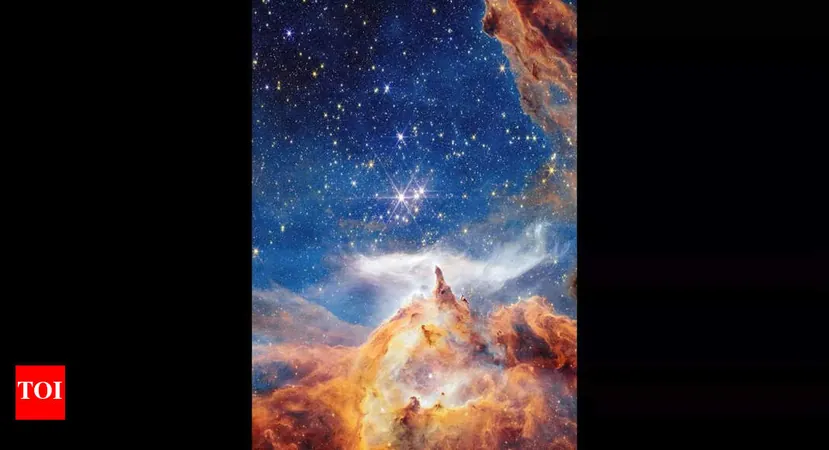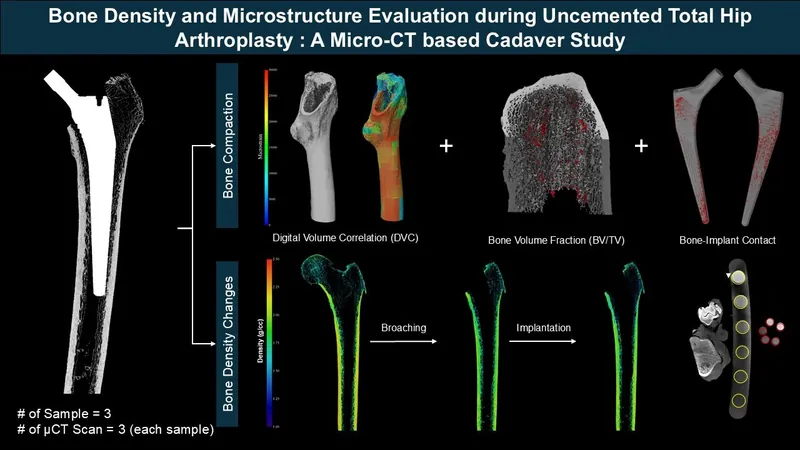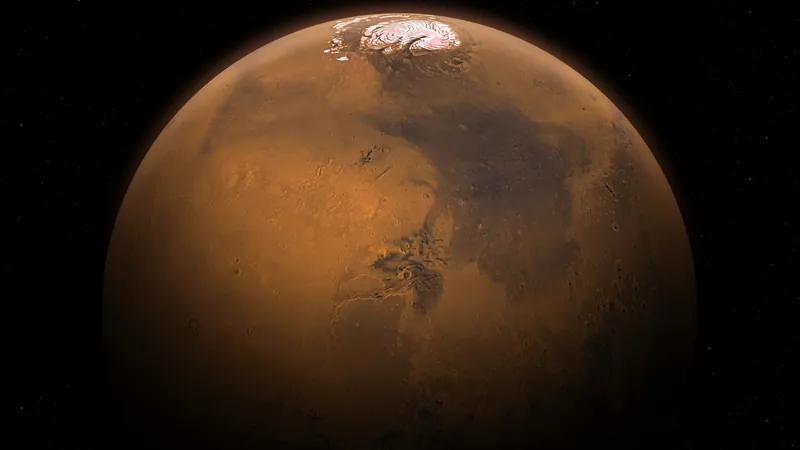
Unveiling the Cosmic Wonders of Pismis 24: James Webb Space Telescope Captures Star-Forming Marvel
2025-09-06
Author: Mei
A Glimpse into the Heart of the Lobster Nebula
The James Webb Space Telescope (JWST) has unveiled breathtaking images of star formation in the Pismis 24 cluster, located a staggering 5,500 light-years away in the Lobster Nebula. This extraordinary cosmic landscape is sculpted by massive young stars whose energy and radiation are shaping and defining the very fabric of the nebula.
The Mysteries of Pismis 24-1 Unraveled
At the core of this stellar cluster shines Pismis 24-1, initially thought to be a single, colossal star but now revealed by JWST as a brilliant duo. This stellar pair boasts an impressive combined mass of 140 times that of our Sun, making them among the most luminous stars ever documented. JWST's Near-Infrared Camera (NIRCam) captured thousands of radiant stars, each sparkling in a myriad of colors, showcasing a stunning celestial tapestry.
The Sculpting Power of Cosmic Winds
The blazing young stars in Pismis 24, some nearly eight times hotter than the Sun, generate ferocious stellar winds and radiation that carve breathtaking structures in the surrounding gas and dust. These towering formations, reaching heights of approximately 5.4 light-years, could easily house over 200 solar systems. The contrasts in color depict a dramatic tableau, with cyan denoting hot, ionized hydrogen gas, orange indicating dust particles, and red marking cooler hydrogen regions.
Nature’s Laboratory for Stellar Birth
Pismis 24 serves as a natural laboratory, allowing astronomers to dive deep into the processes underpinning massive star formation. It provides a unique opportunity to examine how these giants evolve and the extent of their influence on the surrounding nebula. The dynamic winds and radiation not only mold the gas-rich landscape but also ignite the birth of new stars within dense molecular clouds.
Dive Deeper into the Cosmic Dance
Enhanced by engaging visualizations, JWST’s findings bring the splendor of Pismis 24 to life, allowing viewers to journey from Earth to the Lobster Nebula, witnessing the complexities of star formation as never before. With these cutting-edge insights, scientists are unraveling the mysteries of how massive stars shape their surroundings, ultimately affecting the growth and evolution of entire galaxies.
The Future of Stellar Research Awaits
The revelations brought forth by the JWST not only amplify our understanding of cosmic phenomena but also encourage further exploration into the processes that govern our universe. Pismis 24 is just one of many stellar nurseries waiting to be studied, promising a future filled with astronomical discoveries that could redefine our knowledge of star formation.



 Brasil (PT)
Brasil (PT)
 Canada (EN)
Canada (EN)
 Chile (ES)
Chile (ES)
 Česko (CS)
Česko (CS)
 대한민국 (KO)
대한민국 (KO)
 España (ES)
España (ES)
 France (FR)
France (FR)
 Hong Kong (EN)
Hong Kong (EN)
 Italia (IT)
Italia (IT)
 日本 (JA)
日本 (JA)
 Magyarország (HU)
Magyarország (HU)
 Norge (NO)
Norge (NO)
 Polska (PL)
Polska (PL)
 Schweiz (DE)
Schweiz (DE)
 Singapore (EN)
Singapore (EN)
 Sverige (SV)
Sverige (SV)
 Suomi (FI)
Suomi (FI)
 Türkiye (TR)
Türkiye (TR)
 الإمارات العربية المتحدة (AR)
الإمارات العربية المتحدة (AR)